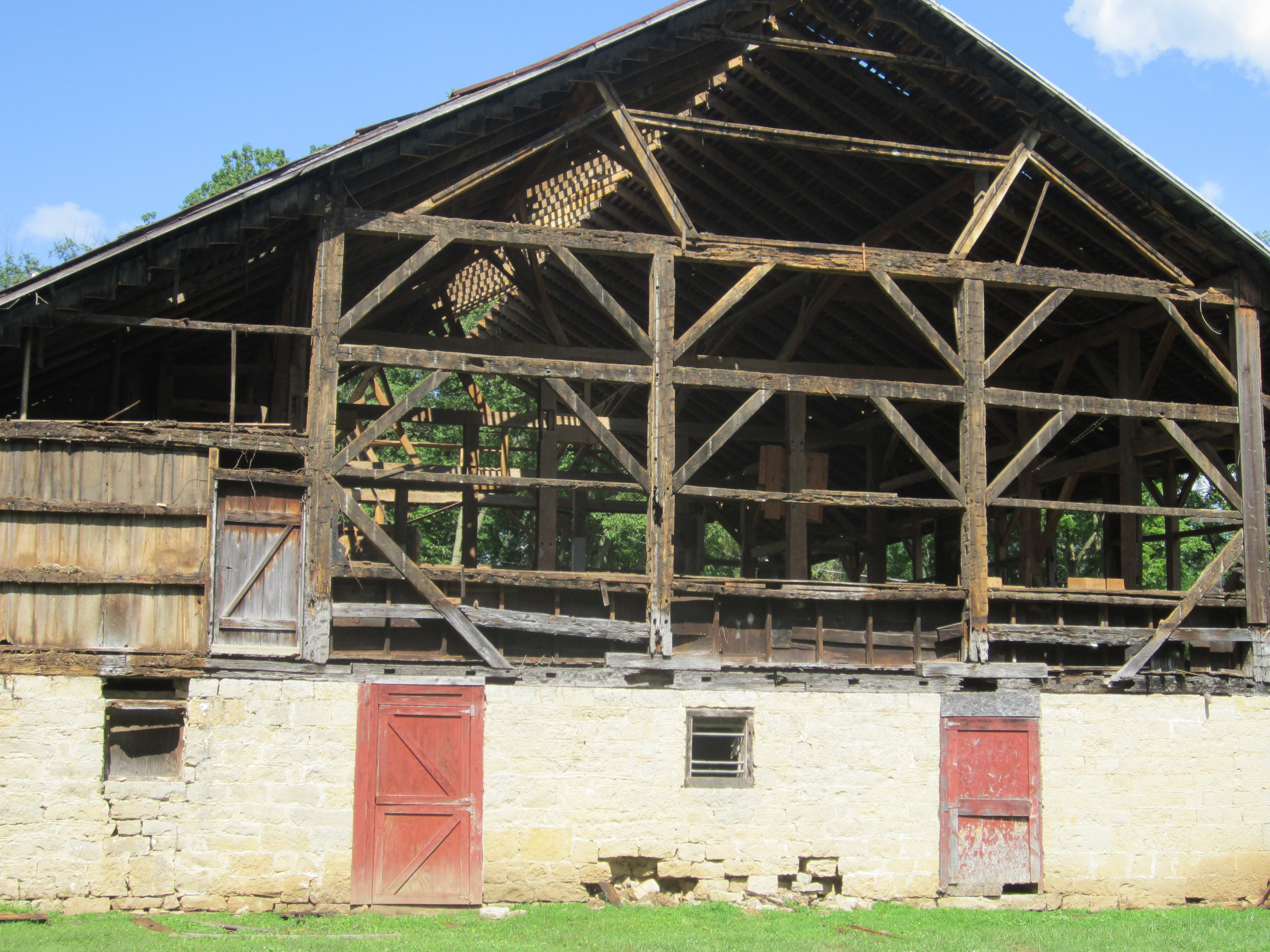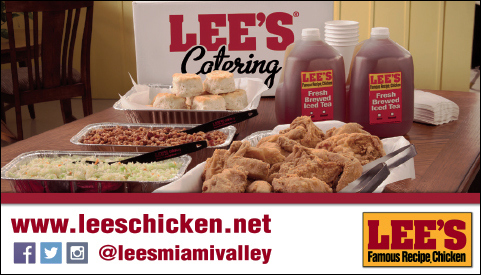Sometimes it’s hard to know where to start with a story-the beginning or the end. Three weeks ago when we wrote about the Black Cat Barn on Lower Valley Pike in Medway coming down, we started in the middle of the story. (see “If These Walls Could Talk”, New Carlisle News, July 12, 2017)
The actual beginning of the barn was back in 1854 when it and its companion house were built by a father for a son. The deed records show by 1874, John S. Harnish and his wife Sarah as owning the farm land and story goes that his father, John Harnish and his mother, Esther Bowman Harnish, had the large farmhouse built for son, John.
The entire farm was part of section 14 of Bethel township, Clark County. Earliest records as found in Beers, 1881 History of Clark County, show that David Lowry, second settler in the area, bought the entire section 14 sometime after settling in section 3 in 1795. He then sold section 14, whether in one piece or divided we don’t know.
An online Facebook post of an 1859 township map shows John Harnish along with four others as owning the lands in section 14. By then, the Harnish farm house had been built, according to verbally described initials and date within the house’s construction and county auditor office files.
If the barn was built before the house, which was common practice back then, we can assume that either John Harnish (the father) built the barn, or had the barn built by someone of the area. (Within the years of 1830 to 1860, Jacob Hartman of Medway was a well-known barn builder. See Beers, 1881)
So, there is the barn’s beginning. Interest turns to who built the barn and what did it take to build barns back then? First, the builder had to be someone with an eye for form, a sense of structure and weight management, as angles and joints had to bear enormous weight. He had to be able to assemble the barn in his mind, piece by piece. Only then could he direct the workers to place every piece where it was needed. Second, manpower and horsepower came from local farmers, artisans and anyone who was willing to work hard for a neighbor’s interest. Third, a close-by saw mill was needed for processing the lumber involved. Fourth, a blacksmith for forging the iron nails would have been hired. Fifth, farm women cannot be forgotten, willing to cook for days ahead so as to feed the dozens of workers and families who would be there for the “barn raising”. From local records we know Bethel Township had all of those points well established.
In preparation, the land was leveled by horse drawn rakes. Timber was harvested locally, taken to the saw mill, lengths already having been chosen by the builder. Cut, hewed, rafters and joist and beams marked for assemblage with Roman numerals (craftsman’s marks). A barrel of nails, a barrel of iron spikes and a barrel of hand-hewed pegs or tree nails were unloaded. By the chosen day, lumber was on site, horses were outfitted with tackle ready for work, tables assembled nearby in the shade of trees for the noon meal and wagons carrying men, families and food were pulling onto the land.
For our barn on Lower Valley Pike, Mr. Harnish chose to have the walls built of hand-hewn limestone, readily available at the time throughout Clark County. Auditor office records show it was of a ‘flat barn’ style, 44 ft. by 74 ft. It had either a slope roof or gabled roof. Later, around 1900, it was improved and enlarged with an expanded upper level and a cantilever floor incorporated so as to afford shelter for stock that would gather up against the barn side during inclement weather. The bank (large mound of dirt built up to barn wall.) was in the back, affording access to the upper level.
Down through the years, the farm changed hands. For example, in 1920, the deed office shows Jacklin H. Barringer as owner. He was born in Osborn in 1882, just down the road from Medway. He worked before and after school, high school and through a course at Miami Commercial College. His first job was store clerk in Osborn’s grocery store. You might recognize the name, as ‘Jack’ Barringer ended up to be first Vice President and General Manager of National Cash Register, Dayton, Ohio.
Much of the barn’s life and that of the farm itself, saw farm families renting the place from the long list of owners. We know of two of those families. In 1907, the Clyde Bird family rented the farm. In 1942, the Harry Miller Sr. family lived there and by then the farm was called Black Cat Farm.
From home to farm animals and wild creatures such as mice and raccoons and an occasional snake, the barn took on a more festive nature in the late 1940s and early 50s as the Black Cat Barn where township dances were held. (see the ‘middle of the story’)
As that era faded away, the barn again was used steadily for animals and hay/straw storage. Later, a small apartment was established in the east upper level, so a resident could actually live above her horses and have quick access for their care.
Somewhere along the way, the barn and its land were divided off from the original farm. In the latest years, it sat empty. Again the local creatures took advantage of the quiet. Mice nested in partially rotted out beams. Raccoons, skunks, and birds of all sorts found home and shelter within the walls.
For safety reasons, the barn was determined by the current owners to be in need of taking down. But how do you take a barn down? There are a couple of quick ways, but in order to preserve and repurpose timbers, beams, rafters and doors, one needs to go back to the kind of man that put it up in the beginning. Someone who can look at the structure, determine how each piece is connected, how much weight is on each piece and how removal will be to the benefit of all that lumber. One such man is Brad Marquart of Creekside Barn Company and his right-hand man, Tommie. When they take on a job such as the Black Cat barn, they study it from top to bottom, mentally taking it apart, at the same time picturing how it went together. Only then do they begin the careful work of taking apart what was carefully put together with the view to reusing all that is possible. Brad’s company motto is “Cut Once-Use Twice”.
In our opinion, the Creekside Barn Company crew makes the end of the story just about as good as the beginning.
If you have questions about the safety of your barn or whether or not it can be refurbished or needs to come down, contact Brad at Creekside Barn Company, 5676 County Highway 330, Upper Sandusky, Ohio, 43351. Phone- 419-731-4232 or This email address is being protected from spambots. You need JavaScript enabled to view it. or look for them on Facebook. “We purchase barns & look to save history one piece at a time.”
Contact Connie at This email address is being protected from spambots. You need JavaScript enabled to view it. or Box 61, Medway, Ohio, 45341.


